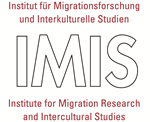In the 2000-2010 Latinos in USA increased by 43%: from 35.3 million to 50.5 million. Mexico contributed over two-thirds of that growth, adding 11.2 million more Mexicans to the US population. But their relative growth (54%) was lower than the 137% growth of Central Americans—from 1.7 to nearly 4 million. Nicaraguans doubled their presence, from 177,684 to 348,202, but the greatest relative growth was of Hondurans (191%), despite being the most harassed by roundups and filtered by migratory controls, followed by Guatemalans (180%) and Salvadorans (152%). Part of that growth is due to natural increase, but the most important part is due to immigration. The US immigrant population grew at a rate of one immigrant every 45 seconds; or put differently, 1,920 immigrants a day and 57,600 a month. More than 60% of the migrants from Mexico and Central America who currently live in the United States are undocumented. According to official estimates, there are 11,510,000 unauthorized immigrants (34% of the total number of foreigners), of which 6.8 million are Mexicans (58% of them born in Mexico), 660,000 Salvadorans (54%), 520,000 Guatemalans (63%) and 380,000 Hondurans (73%). Undocumented immigrants have a relative important weight in their areas of greatest settlement: in 2010 they represented more than 6% of the population in the states of Nevada, California, Texas, New Jersey and Arizona: 6% of those states’ inhabitants without legal status or identity. Despite their weight, being undocumented is recorded as an accessory particularity that US Census Bureau statisticians, demographers of various institutes, human rights activists and academics who denounce the undocumented phenomenon mainly as a failure or abuse of state policies busy themselves with. The myopia regarding this feature generates a particularly regrettable theoretical and methodological vacuum because crossing borders “without papers” and settling without having one’s legal status in order is the form of migration most turned to by Latin American, particularly Central American, migrants looking for access to the US labor market, which is decidedly better remunerated than the one in their respective country of origin. Never before were so many “criminals” coming into the United States, residing and working there.
The undocumented migration of Latin Americans to the United States as an act of transnational civil disobedience
| Projektart | Promotion |
| Finanzierung |
|
| Themen |
|
| Disziplinen |
|
| Laufzeit | 04/2013 ‒ 02/2016 |
| Geographischer Fokus |
|
| Institutionen | |
| Beteiligte Personen |
|
| Kurzbeschreibung |
|







